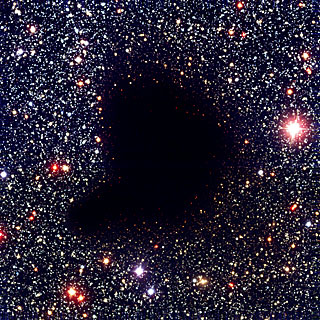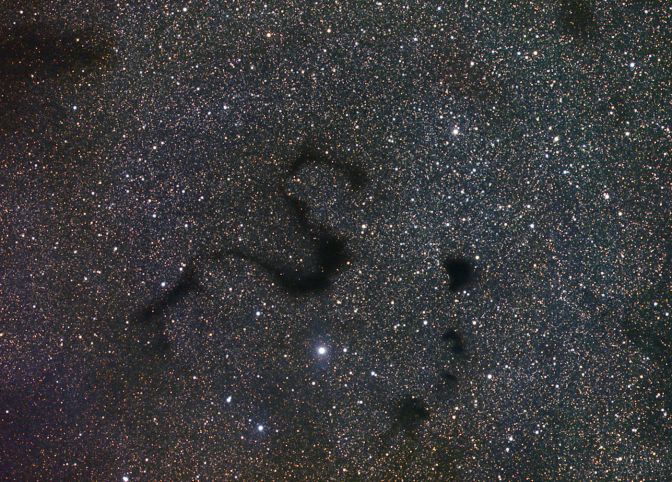New Scientist | Astrophile | Ken Croswell | 2012 Sep 07
Object: Barnard 68
Mass: Around the same as 1 to 3 suns
Distance: 300 to 500 light-years
The contenders are lined up, each aspiring to greatness. Suddenly, a bullet ploughs into one of these shadowy figures, which then collapses. Success! A star is born. Star-making proceeds quite differently in the heavens than in Hollywood.
New observations back up this tale of violent transformation for Barnard 68 – a cold cloud of gas and dust, known as a Bok globule, which hovers in the constellation Ophiuchus and may give us one of the most detailed glimpses of the first stage of star birth.
Until recently, the inky blob had an uncertain future – some astronomers thought it was a sun in the making, while others thought it's a washout.
Right now, the gas and dust in Barnard 68 is more frigid than Pluto and so dark that if someone were sitting inside they wouldn't be able to see a single star in the sky. It also has an extension of cloud and gas to its lower left.
In 2009, Andreas Burkert of the University of Munich in Germany, who wasn't involved in the new work, and João Alves, now of the University of Vienna in Austria, proposed that the cloud's extension is really a separate cloud that is striking Barnard 68 like a slow-motion bullet.
The bullet cloud's impact should cause the larger globule to collapse until it becomes so dense and hot that it shines like a sun-like star.
New observations by Markus Nielbock of the Max Planck Institute for Astronomy in Heidelberg, Germany, and his colleagues now support this idea.
They used ESA's Herschel Space Observatory to measure the temperature of dust in the cloud, from its centre to its edge. Their results show that it is definitely cold enough for star formation.
They also made ground-based radio observations, which reveal that the bullet's velocity differs slightly from that of the main cloud. This suggests they are indeed two separate clumps of material.
Twirling cloud
Nielbock thinks Barnard 68's future is still unclear, but he cautiously predicts that it is on the verge of collapsing.
Burkert is bolder, saying that in a few hundred thousand years the collapse will heat the cloud's centre so much that it will shine as a star – albeit one powered by gravity. Our sun spent millions of years in this gravity-powered phase before switching to nuclear energy.
The bullet is probably striking off-centre, Burkert adds, which gives the main cloud a twirl so that a disk of leftover material will arise around the newborn star. That disk might one day form planets like Earth, perhaps complete with its own Hollywood stars.
"I don't know of any other object that is so close and well-studied where we can understand how a sun forms," Burkert says.
The earliest phases of star formation observed with Herschel (EPoS):
The dust temperature and density distributions of B68 - M. Nielbock et al
- arXiv.org > astro-ph > arXiv:1208.4512 > 22 Aug 2012 (v1), 06 Sep 2012 (v2)
APOD: Molecular Cloud Barnard 68 (2012 Jan 29)
<< Previous Astrophile


